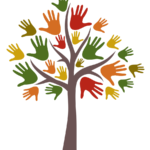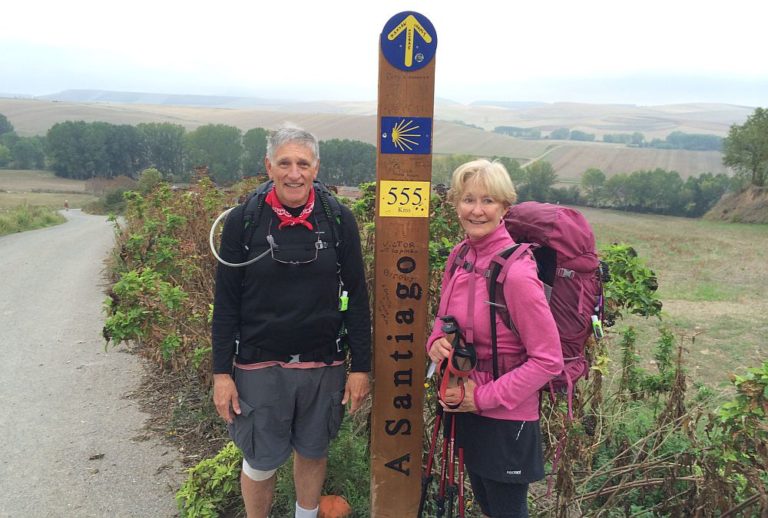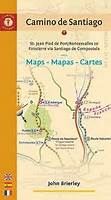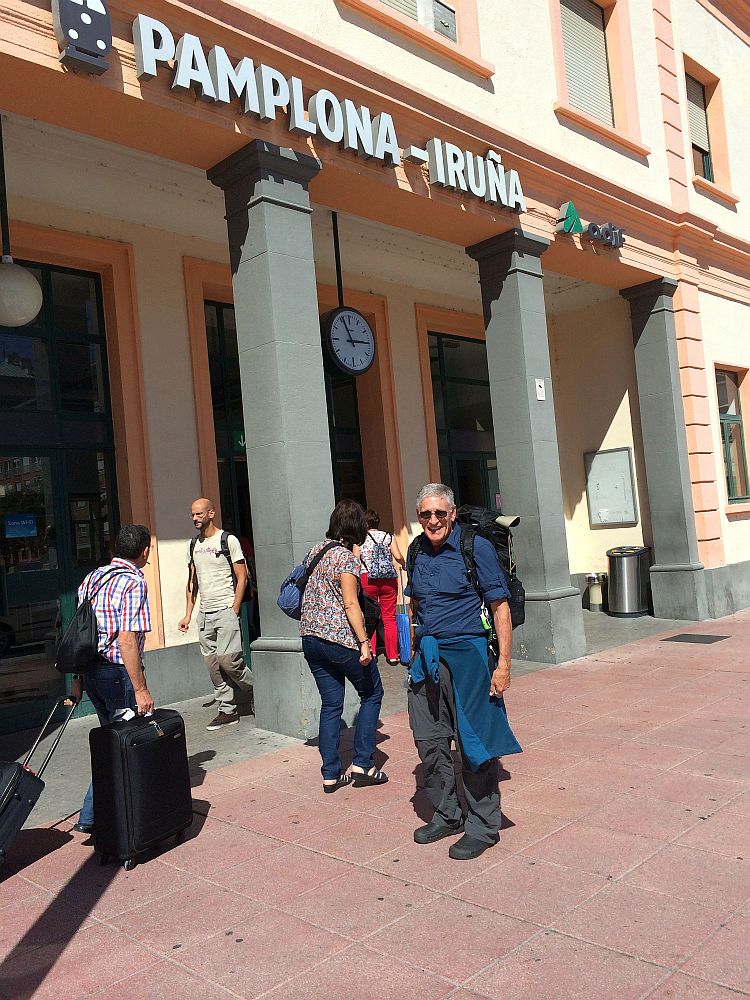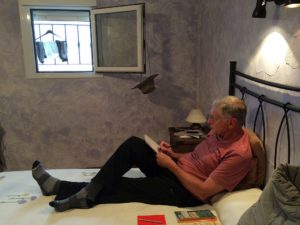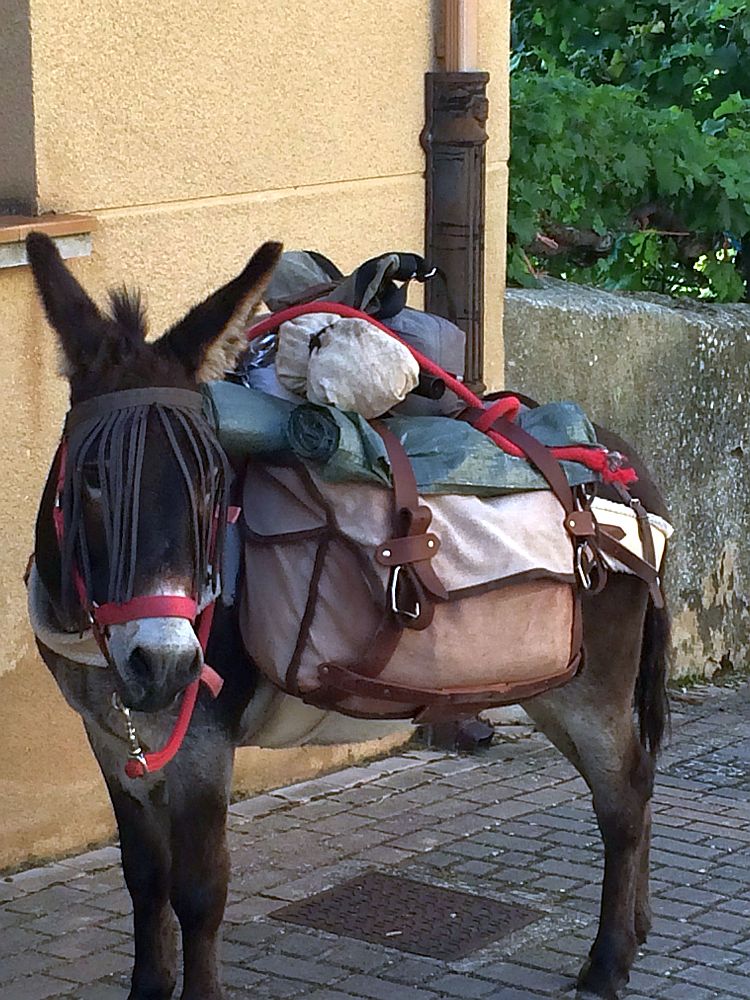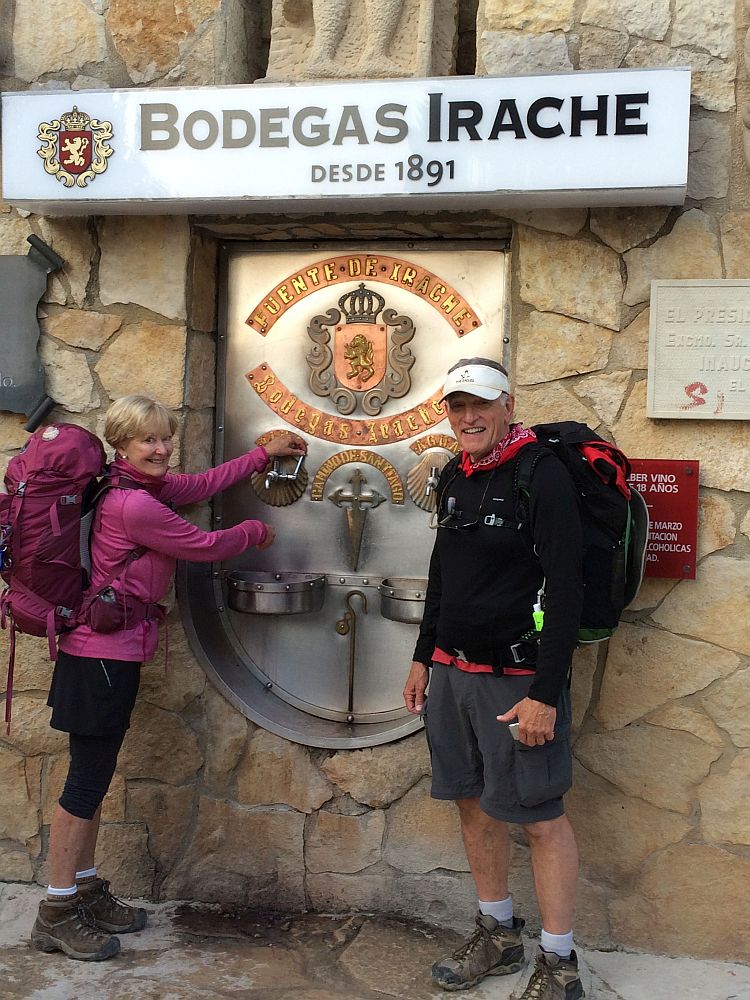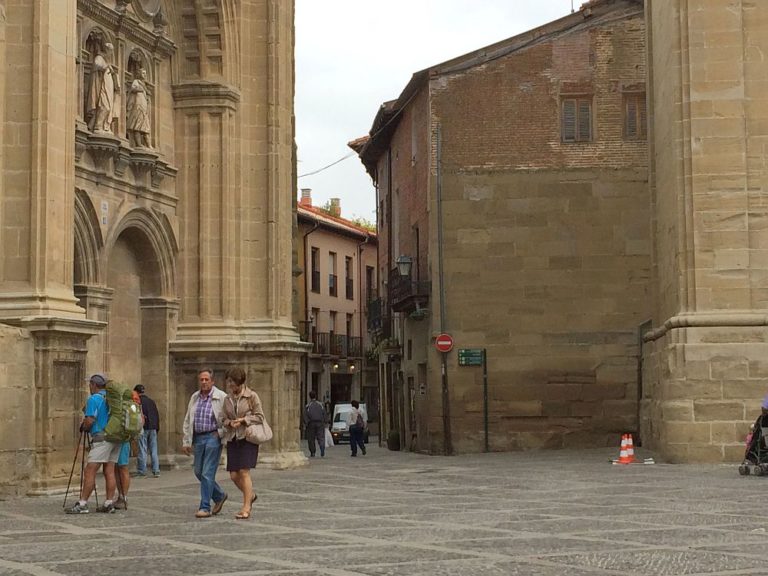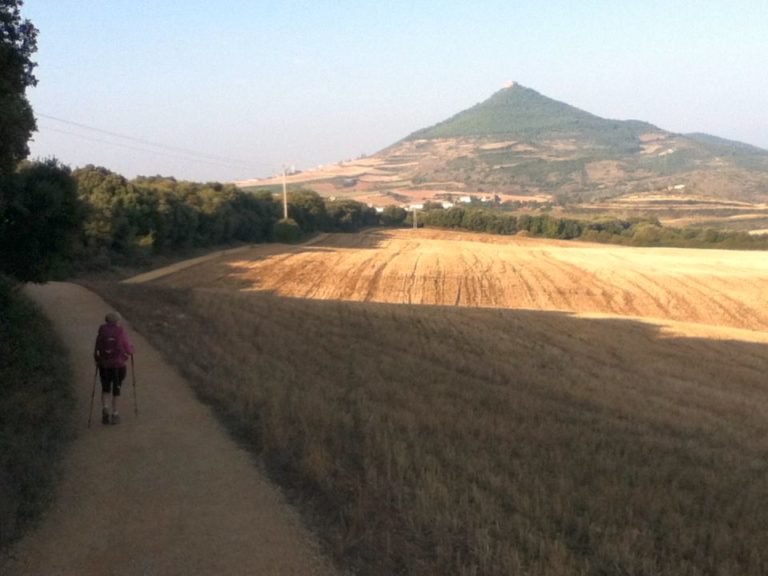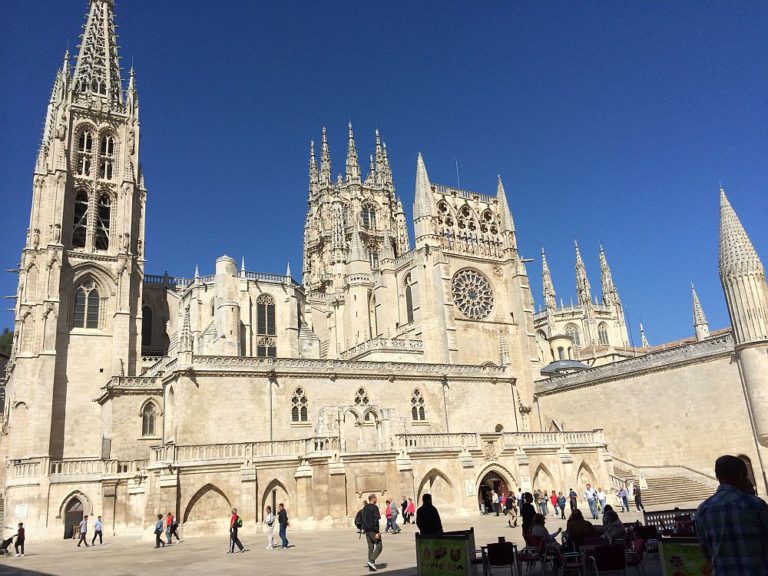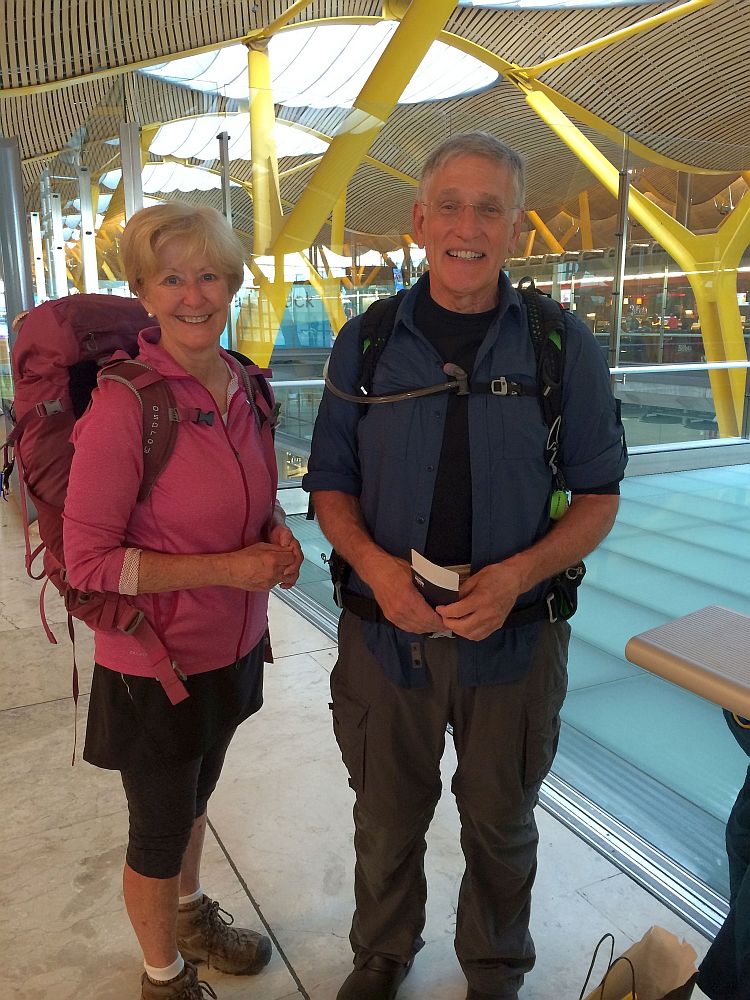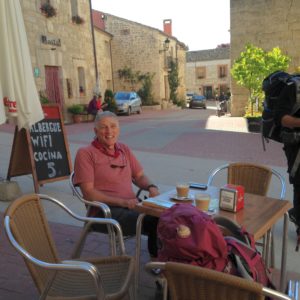by Pat Kidd and Davis Henderson
The Camino is a well-trodden route (dating back more than 1,000 years) whose popularity has soared in recent years. Back in the mid-1980’s, fewer than 3,000 pilgrims made the trek each year. In 2011, after Martin Sheen’s movie “The Way”Martin Sheen’s movie “The Way” was released, 180,000 people completed the Camino and last year that number topped 250,000. Clearly this ancient pilgrimage route taps something important in today’s zeitgeist.
We were inspired by “The Way” too, after watching it on a chilly Thanksgiving evening in 2013. First just a spark, that became a small flicker as some warm days arrived in February and became a full-fledged flame when we went to REI in March and bought backpacks, hiking boots and poles.
Getting There
Several of the staffers at REI were experienced long distance hikers and offered a great deal of useful information and suggestions. We accepted their guideline of carrying a loaded pack weighing no more than 10% of our body weight. That limited Pat to 12 pounds and Davis to 17 pounds. Subtracting the 3.5 pounds from those weights for the drinking water we would be carrying, and “essential” clothing and “necessary” toiletries took on a whole new meaning. But we figured out what we could take and what we would leave behind and began to hike each weekend longer and longer distances with our loaded packs.
Our next task was how to divide the ~150 miles of each year’s hike into reasonable segments. We found a wonderful guidebook, Camino de Santiago, by John Brierley written for hikers just like us. The guide contained detailed maps of the whole Camino showing places to stay and interesting sites not to be missed. We decided to hike 14-16 miles each day for four days in a row and then take a full day off for rest.
We joined the trail in Roncesvalles on the Spanish side of the French/Spanish border high in the Pyrenees. Traveling from Philadelphia to Roncesvalles turned out to be easy and fun. Boarding an evening flight in Philly, we woke up the next morning in Madrid. We transferred from the airport to the Madrid train station, boarded a modern “bullet” train and headed to Pamplona in cushy comfort. In Pamplona we hailed a taxi and in halting Spanish asked, “A Roncesvalles?”
We were greeted with a wonderful smile and an enthusiastic “si!” We were on our way. Climbing up into the Pyrenees, the taxi driver could not have been friendlier. But he was friendly in Spanish. Slowly a language learned many years ago in South America and only spoken intermittently since began to fall back into place in Davis’ brain. The conversation flowed back and forth faster and faster, and these two Americanos relaxed a bit and realized something very special was taking shape.
That night we had our first “pilgrims’ dinner.” As we found would be the custom every night along the Camino, a local inn keeper prepared a hearty three course meal with all the local wine we wanted and charged us a modest ten euros. We joined a family style table with six other hikers and quickly realized the fellow pilgrims we would be meeting along the way would be one of the special gifts of the Camino. There was Big John, the former radio voice of the Buffalo Sabers NHL hockey team. And there was Little John from The Netherlands, who was hiking the Camino for the second time. There was Angela, a misty 20-something artist/poet from Australia. In the coming days we would see these pilgrims again along the way as we traveled the trail for our differing reasons at our differing paces.
Hitting the Path
Our first day on the Camino dawned clear, cool and beautiful in the Pyrenees. We had a full European breakfast to stoke ourselves for the first 15 miles. As the sun rose, we heard the crunch of our boots and the tap-tap of our hiking poles. These sounds would be our steady companions, along with the voices of fellow hikers from Spain and France and Italy and Germany and Japan. From all over the world, fueled by different motivations, we were joined together on the Camino, putting one foot in front of the other and watching the miles pass by.
Along the path, an old Basque farmer tended his cows and greeted every hiker with a “Buen Camino,” bestowing kisses on the women who passed close by. Together, we breathed lightly as the path flowed downhill and collectively groaned as we carried our backpacks up the first steep hill. In each tidy Basque village, small cafes offered clusters of peregrinos fragrant café con leche. The well-marked Camino passed through fields, across streams and up and down hills as we made our way out of the mountains.
We ended our day 15 miles later in Larasoanna, where we collapsed in a small “casa rural” that rented a few rooms to passers-by. At an early pilgrim’s dinner we sat at a table with 10 others, from five different countries sharing stories from the day. The day ended with journal entries and reflections on lessons learned while we listened to a late thunderstorm, thankful for the roof over our head.
We quickly fell into a daily routine, rising before sunrise, donning boots, packs and poles, collecting our laundry, often hanging it from straps on our backpacks to dry in the sun. It was exciting to hit the trail, not knowing who we would meet, what sights we would see or where we would spend the night. The wonderful thing about walking is how slowly the world passes by and how much time there is to look — really look — and really listen. No question, however, that at the end of the day we ached from head to toe.
Every fifth day was a rest day. It was an opportunity to sleep in, let muscles heal give weary bones a rest and spend some time really diving into the history of a village, visiting its churches and monasteries, expanding our journal entries.
Amazingly, after our “day five” rest day in both 2014 and 2015, something magical happened. Our bodies adjusted to the rigors of hiking and the aches and pains diminished. While we were still weary at the end of the day, we weren’t leaning so hard on our poles at the end of the day and began each new day with a spring in our step.
Folks Along the Way
Just like the characters in Chaucer’s Canterbury Tales, the people along The Way are fascinating and bring a wealth of stories. A few of the folks we met along the way:
“Minnesota Mike,” a 60-something-year-old pilgrim who talked about the Camino for so many years that his wife finally kicked him out of the house, saying “Go to Spain or I’ll never hear the end of this!” He hiked with only a few personal things in a tiny knapsack and used a couple of spindly branches as his hiking poles.
“Little John,” a young consultant with one of the major consulting firms when he was diagnosed with brain cancer. He was hiking the Camino alone, and had done sections of it previously. Under treatment, his medications were shipped ahead every day to his next lodging. He was hiking in hopes of defeating his cancer but also realistic about the fact that he might not make it.
“The Belgians with the Donkey.” We never learned the names of this middle-aged couple who were hiking with their donkey, but learned they had begun in Belgium and by the time we encountered them, they’d already walked 600 miles. They were completing the Camino, close to 900 miles from where they started, then continuing on through Portugal and across the Mediterranean to Morocco. They had set aside a full year for their sojourn.
“Bill, a sheep rancher from Australia.” He followed US politics closely and asked us to explain why John McCain had chosen Sarah Palin as his running mate.
One morning we walked out of the village of Belorado with two women from London, Carol who was originally from Hong Kong and Ah Fong, who was from Malaysia. They were hiking the whole Camino from St. Jean Pied-de-Port to Finisterre, on the Atlantic Ocean. Their backpacks were being “sagged,” (carried by van from each night’s lodging to the next) and they kept a brisk pace because they had a daily schedule they needed to keep — they had made all their lodging reservations in advance with no rest days at all!
“Motorcycle Greg,” with his American flag headband and scruffy beard, was on his second Camino. He said that the first time around he met someone who told him they were hiking the trail a second time. He thought they were crazy! But when he came home he found he missed the camaraderie and the deep spiritual learning from the Camino, so there he was on his second pilgrimage.
One hot, dry afternoon, hiking with Minnesota Mike, we approached a pear tree on the side of the trail. We heard voices coming from high up in the branches. We discovered two German women hikers had climbed up the tree and were tossing down ripe pears to hikers as we passed by. The pears were sweet and welcome refreshment.
Hiking through the never-ending vineyards of Rioja you could always grab a bunch of grapes, but the best surprise of all was on the outskirts of Estella. There we found the fountain of wine. Yes, the local winery has installed a free wine tap on the outside wall of its bodega warehouse. Pilgrims are welcome to serve themselves. There was a posted notice reminding us we still had many miles to go before reaching Santiago, so not to over indulge. Our kind of fountain. The Camino does provide!
We hiked through small village after small village, which all looked much the way they must have for centuries. We were always greeted by the villagers with an encouraging, ‘Buen Camino.” There were small medieval parish churches whose cornerstones had dates in the 1300’s and 1400’s and quaint cafes advertising free wi-fi. From time to time we crossed over or hiked alongside a modern highway.
But for the most part the trail took us through pastures, wheat fields, olive tree groves, vineyards and rolling hills. Often the only sounds we heard were our footsteps and the birds above.
If our experience is typical, the best time to hike the Camino is September and October. By that time of the year the searing summer heat has abated and the number of hikers has diminished. Before reaching the western province of Galicia, where rain is very common, we only had one full day of rain. That day of rain was enough to make us realize how lucky we were.
The few larger cities we hiked through, Pamplona, Burgos and Leon also have their attractions. If you like your cathedrals Gothic, Burgos and Leon will not disappoint. In Burgos, the Catedral de Santa Maria is Gothic with almost overwhelming Baroque elements. Recently sand blasted clean, it literarily sparkles in the sun light under the blue sky.
Leon’s cathedral is also dedicated to Santa Maria and is in the running to be our most favorite Gothic cathedral. It has been wonderfully maintained in its pure French Gothic style through the centuries.
Leon was a rest day for us and we have to confess we pulled out our credit card and checked into the Parador. It is a former monastery that has been converted into a magnificent five star hotel by the Spanish Tourist Secretariat. Oh my, those stars are well deserved!
Practicalities
So how much does a pilgrim have to pay for this divine experience? Well, that depends on how you travel. On one end of the spectrum you can pay the New York Times travel agency close to $7,000 (not including airfare) to join their 10 day introduction to the Camino with all of your in-country arrangements made for you, including lodging in multi-star hotels. If you take that option and others like it, you will cover most of the ~500 miles paralleling the Camino via bus. You will hike a few miles each day with a guide on various segments of the Camino and end up in Santiago at the end.
On the other end, you can do it our way and make all your own arrangements, hike the full distance, breathe the clean air, feel the physical aches, meet extraordinary fellow travelers, imagine what it must have been like when the Knights Templar were your guardians and enjoy the warmth of the rural Spaniards, many of whom have hiked the Camino themselves. We are biased in favor of our way.
Making your flight arrangements is not difficult. Just make sure you passport is valid for at least six months beyond your return date. Buy the John Brierley guidebook. Decide if you want to hike the whole Camino in one shot, only hike certain stages or divide the whole Camino into a number of annual hikes as we did. Make lodging reservations on the internet for where you want to start and end your hike and where you want to rest if you do a schedule similar to ours.
Take your smart phone with you and each day book a reservation for that night on booking.com at lunch time at a wi-fi café when you have an idea of where you will end your hike that day. We promise you it is easy. You may be hiking through medieval-looking Spain, but you are covered by a modern day infrastructure.
We spent about $2,700 per person for each of our 20 day trips, paying $1,300 for transportation and the remaining $1,400 on food, lodging, gifts and a massage or two. Buen Camino!
